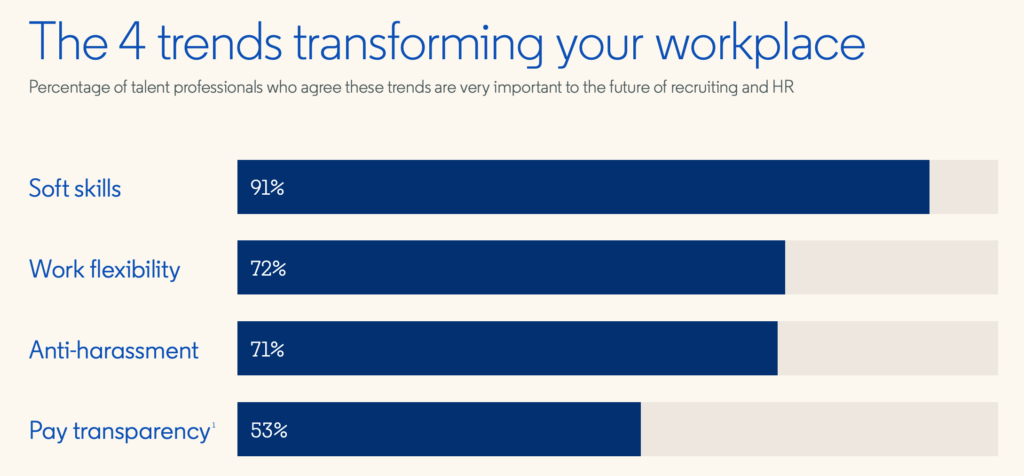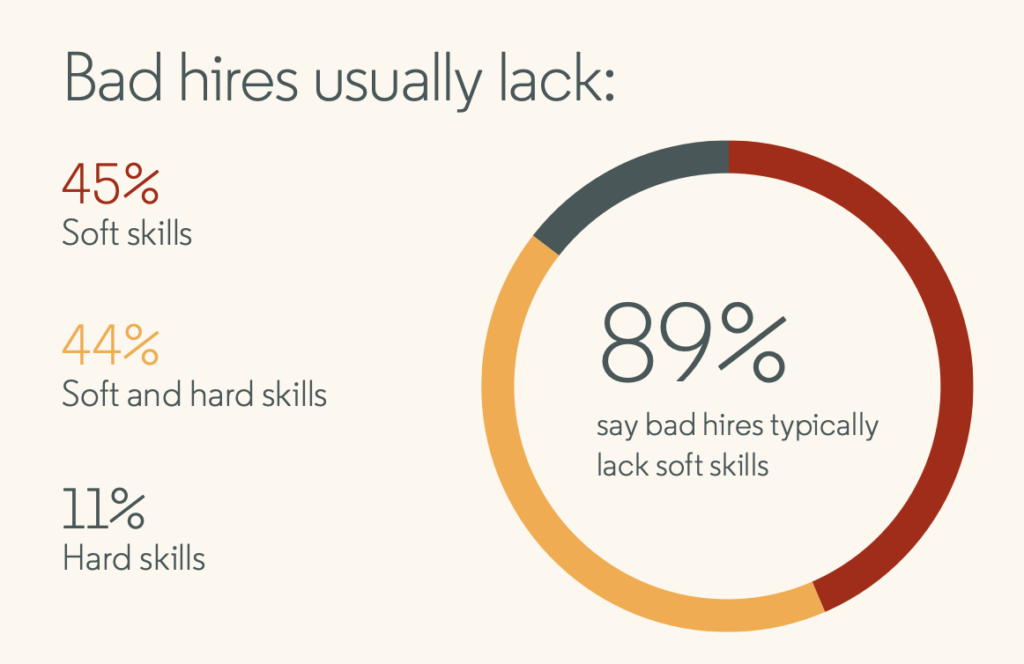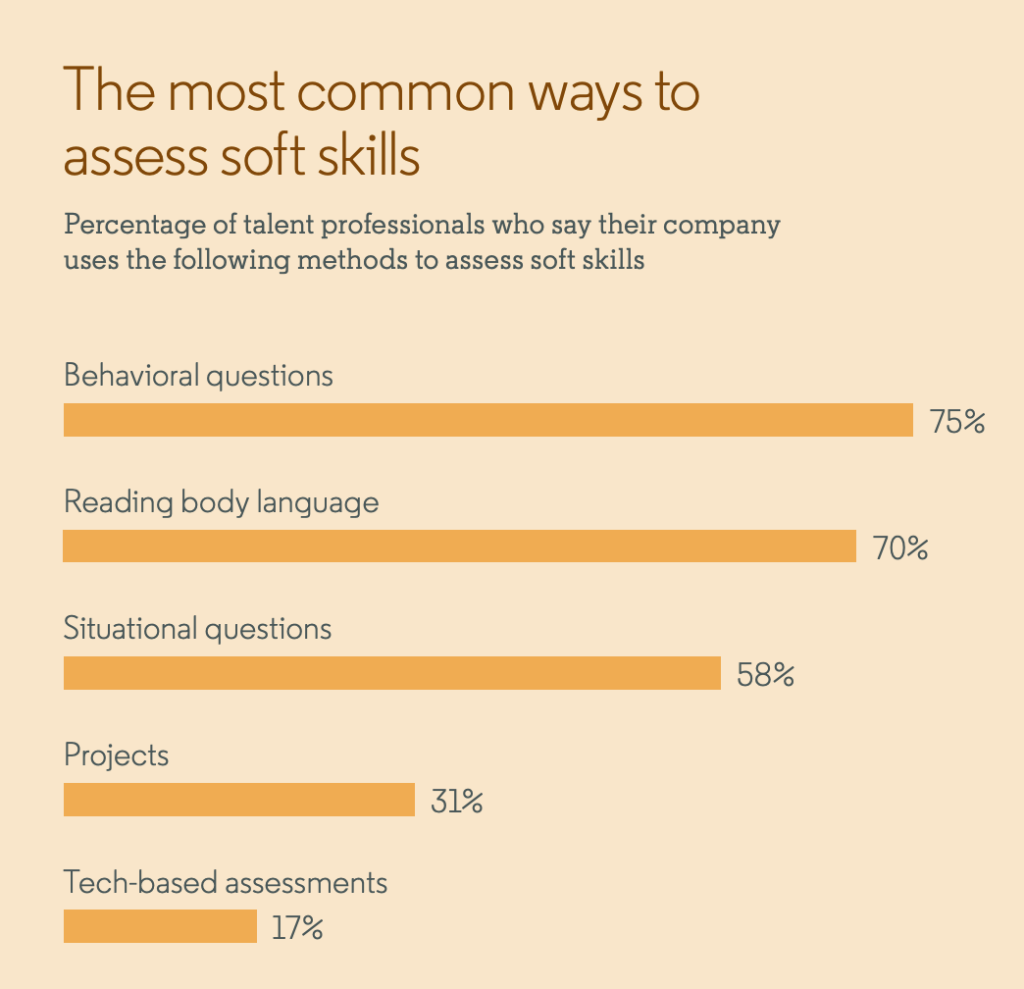Selecting salespeople based on hard skills is pretty straightforward. You see that a candidate clearly has the quantifiable abilities and experience required for a sales position, and often, you can easily verify it. Unfortunately, that’s not the case for the other type of skills I’ll discuss in this post — soft skills.
According to an in-depth study by LinkedIn, 89% of recruiting experts say there’s a common denominator between most bad sales hires. They lack the right soft skills.
LinkedIn’s Findings Behind Bad Sales Hires
In 2019, LinkedIn performed an exhaustive report where they surveyed over 5,000 talent professionals across 35 countries and analyzed comprehensive behavioral data. One of the primary areas they focused on was soft skills, as they found that it was the number one trend transforming the workplace that year. In fact, 91% of talent professionals agreed that soft skills were “very important” to the future of recruiting.

Going one step further, LinkedIn wanted to determine the impact soft skills had on the long-term success of candidates that were hired. And it turned out that the impact was quite immense, with their data finding a lack of soft skills to be a key contributor to most bad sales hires.
According to their findings, only 11% of recruiting experts said bad sales hires lack hard skills. However, 45% said they lack soft skills, and 44% said they lack both soft and hard skills. Put that all together, and 89% of recruiters said bad hires lack soft skills.
Why Soft Skills Are So Important in Sales
As you probably know, there is a wide range of factors that determine how successful someone is at selling. Obviously, having hard skills like product knowledge, knowing how to use a CRM, and performing sales demos is important. But this doesn’t always translate into success. To truly predict how good a candidate will be at their job, you need to see the big picture and also take soft skills into account.
Some examples include:
- Collaboration
- Communication
- Rapport-building
- Empathy
- Quick problem-solving
Beyond that, it’s important for a salesperson to be nimble and think on their feet. You could even argue that having a certain level of likability is critical to building relationships and winning over customers. But there’s a problem.
Assessing Soft Skills is Notoriously Difficult
As I mentioned earlier, evaluating a candidate’s hard skills is fairly simple. A quick glance at their resume, for example, will usually give you a basic idea of what they bring to the table. You can also have them perform a test on their product knowledge, see how well they understand a particular business platform, perform a mock product demo, and so on.
“Identifying poor soft skills, however, is much harder, which is why they’re often discovered too late, after a hire has been made,” LinkedIn explains. “But as the data shows, bad hires are almost never a matter of hard skills alone.”
The main issue sales recruiters run into is that they lack a formal approach for assessing soft skills. In fact, 68% say they rely on basic behavioral questions or simply reading body language. “She seemed upbeat, so she’s probably a good collaborator; he seemed nervous, so he’s probably not a good leader. The problem is that these perceptions aren’t predictive, and worse, they’re often unconsciously biased.”
Given the inherent limitations of this commonly used approach, it’s unsurprising that so many sales recruiters struggle to accurately gauge soft skills in candidates. This brings me to my final point.
How to Effectively Evaluate Soft Skills
Given how tricky it’s been historically, how exactly should you go about assessing soft skills in sales candidates?
Here’s a four-step system that I feel is highly effective:
- Identify essential soft skills – Pinpoint four or five specific skills that are a must for being a successful salesperson at your company and make them a top priority when recruiting.
- Leverage assessment tools – Back in the day, recruiters had to primarily rely on behavioral cues and body language, but now there are several objective tools like eSkill and Pymetrics that can provide you with quantifiable data. eSkill, for instance, allows you to measure emotional intelligence to ensure candidates have a high level of communication and collaboration.
- Be aware of unconscious bias – LinkedIn found that unconscious bias often gets in the way of recruiters assessing candidates. You may, for example, be inclined to like a particular candidate because they have a similar personality as you. But keeping this in mind can help steer you away from this issue.
- Standardize your interview process – “Train interviewers to ask a standard set of questions suited to the skills you’re targeting. This allows you to easily compare evaluations, even if they’re done by different interviewers.”
Beyond that, many companies can benefit from using a sales recruiting platform like HireDNA. It uses science-based assessments that look at core selling competencies like motivation, desire, and coachability to predict success and can quantify what used to be unquantifiable.

Avoiding Bad Sales Hires
Having the right mix of hard and soft skills is critical to making good hires and building a strong team of salespeople. Unfortunately, the latter is more difficult to evaluate and has created a consistent problem for many brands over the years. Further, nearly 9 out of 10 recruiting experts say bad hires lack soft skills.
While assessing soft skills will, admittedly, always be trickier than assessing hard skills, it’s certainly possible. And the four-step process outlined above should help.
To learn more about HireDNA and how it can dramatically improve your sales recruiting, reach out to us today. 92% of candidates recommended through this platform become top performers within a year.








